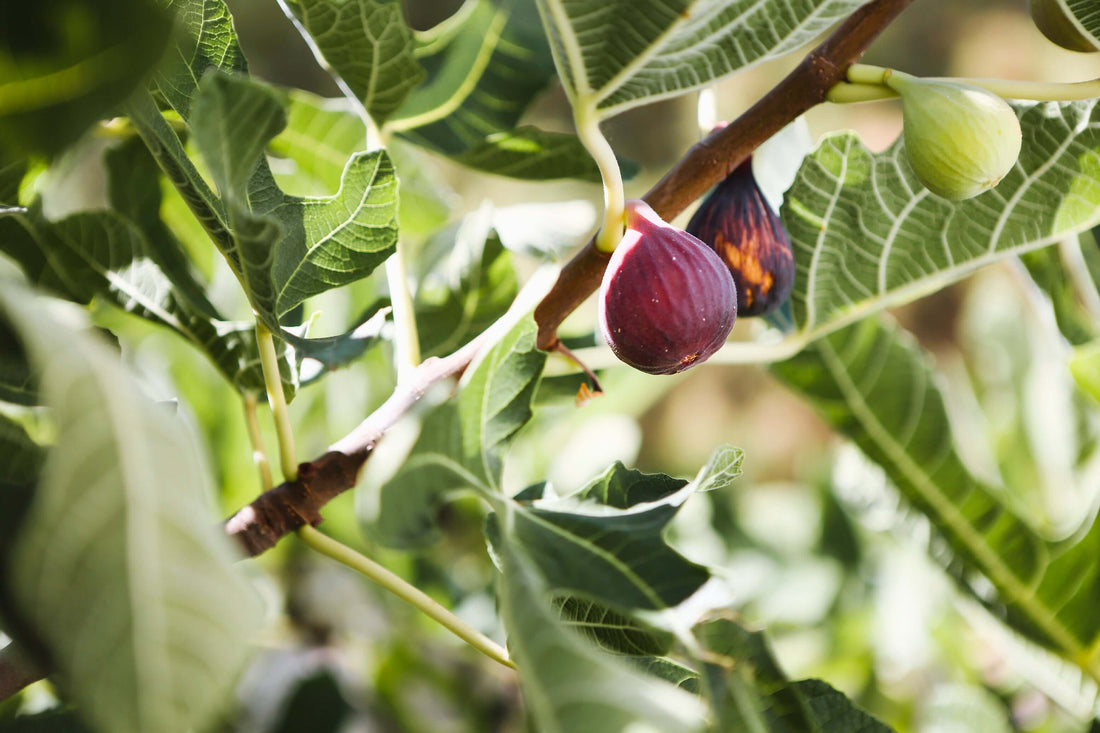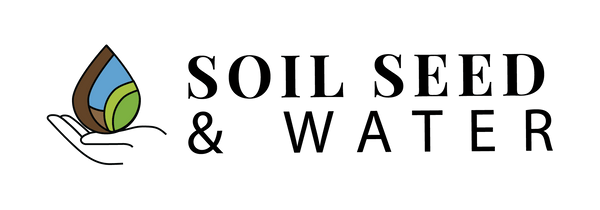
Complete Guide to Organic Fig Cultivation in the United States
Share
Topics Covered in This Article
-
Introduction to Organic Fig Growing
-
Selecting the Right Fig Varieties for Your Region
-
Site Selection and Soil Preparation
-
Organic Soil Amendment with Dairy Compost and Worm Castings
-
Planting Techniques and Timing
-
Organic Fertilization Programs
-
Watering and Irrigation Management
-
Pest and Disease Management Using Organic Methods
-
Pruning and Training Fig Trees
-
Harvesting and Post-Harvest Care
-
Seasonal Maintenance and Long-term Care
Introduction to Organic Fig Growing
Fig cultivation represents one of the most rewarding endeavors in organic fruit production across the United States. These ancient fruits, scientifically known as Ficus carica, thrive in diverse climatic conditions and respond exceptionally well to organic growing practices. Organic fig production emphasizes soil health, natural fertilization, and sustainable pest management techniques that produce superior fruit quality while maintaining environmental stewardship.
The transition to organic fig cultivation requires understanding the fundamental principles of organic agriculture, including soil biology enhancement, natural nutrient cycling, and integrated pest management. This comprehensive approach not only produces healthier fruit but also creates a more resilient growing system that can adapt to changing environmental conditions.
Selecting the Right Fig Varieties for Your Region
Success in organic fig cultivation begins with selecting varieties suited to your specific climate zone. In the United States, fig varieties are generally categorized into those requiring pollination and self-pollinating types. For organic production, self-pollinating varieties prove most reliable and productive.
Northern regions (USDA zones 6-7) benefit from cold-hardy varieties such as Chicago Hardy, Brown Turkey, and Celeste. These cultivars demonstrate excellent cold tolerance and shorter growing seasons, making them ideal for areas with harsh winters. Central regions (zones 8-9) can successfully grow a broader range including Mission, Kadota, and LSU varieties developed specifically for the Gulf Coast region.
Southern and Western states (zones 9-11) offer optimal conditions for premium varieties like Black Mission, Calimyrna, and specialty Mediterranean types. These regions allow for extended growing seasons and multiple harvests per year, maximizing organic production potential.
Site Selection and Soil Preparation
Proper site selection forms the foundation of successful organic fig cultivation. Fig trees require well-draining soil with pH levels between 6.0 and 6.8, though they tolerate slightly alkaline conditions up to 7.5. The selected site should receive full sun exposure for at least six hours daily, with protection from strong winds that can damage branches and reduce fruit set.
Soil preparation begins with comprehensive soil testing to determine existing nutrient levels, pH, and organic matter content. Organic fig production thrives in soils with high organic matter content, typically 3-5%, which improves water retention, nutrient availability, and beneficial microbial activity.
Initial soil preparation involves incorporating generous amounts of organic matter through deep tillage or broad-fork cultivation. This process should occur during fall or early spring, allowing organic amendments time to decompose and integrate before planting.
Organic Soil Amendment with Dairy Compost and Worm Castings
The cornerstone of organic fig production lies in building healthy, biologically active soil through strategic amendment with organic materials. Dairy compost and worm castings represent two of the most valuable organic inputs for fig cultivation, providing both immediate and long-term soil benefits.
High-quality organic dairy compost, such as Dan's Gold Organic Dairy Compost, provides balanced nutrition while improving soil structure and water retention. Apply dairy compost at a rate of 2-4 inches around the tree's root zone, extending to the drip line. This amendment should be worked into the top 6-8 inches of soil during spring preparation or fall maintenance.
Worm castings offer concentrated, slow-release nutrition that fig trees readily absorb. Premium worm castings like Mikey's Worm Poop Organic Dairy Vermicompost provide exceptional soil biology enhancement while delivering gentle, consistent nutrition throughout the growing season. Apply worm castings at 1-2 pounds per mature tree, distributed evenly around the root zone and lightly incorporated into the soil surface.
Planting Techniques and Timing
Optimal planting timing varies by region but generally occurs during dormant seasons when trees can establish root systems before active growth begins. In northern regions, early spring planting after frost danger passes proves most successful. Southern regions benefit from fall planting, allowing trees to establish during mild winter conditions.
Proper planting technique involves digging holes twice as wide as the root ball but no deeper than the existing soil line on the trunk. Organic fig production benefits from shallow planting that encourages lateral root development and improves nutrient uptake from surface organic amendments.
Backfill planting holes with native soil amended with 20-30% organic compost, ensuring good soil-to-root contact while avoiding air pockets. Water thoroughly after planting and apply a 3-4 inch organic mulch layer, keeping mulch several inches away from the trunk to prevent pest issues.
Organic Fertilization Programs
Organic fig fertilization focuses on feeding soil biology rather than directly feeding the plant, creating sustainable nutrition cycles that support long-term productivity. Annual fertilization programs should begin with soil testing to determine specific nutrient needs and adjust organic inputs accordingly.
Spring fertilization typically involves applying balanced organic fertilizers that provide nitrogen, phosphorus, and potassium in naturally available forms. Organic fertilizer applications should occur as soil temperatures warm and microbial activity increases, ensuring optimal nutrient release timing.
Mid-season nutrition support comes from additional organic amendments and foliar applications of organic liquid fertilizers. Summer applications of diluted fish emulsion or kelp meal provide readily available nutrition during peak growing periods while supporting continued soil biology development.
Fall fertilization emphasizes phosphorus and potassium to support root development and winter hardiness while reducing nitrogen to prevent late-season growth that may be damaged by early frosts. Quality organic suppliers like Soil, Seed and Water offer comprehensive organic fertilizer programs designed specifically for fruit tree production.
Watering and Irrigation Management
Efficient water management proves critical for organic fig production, as consistent moisture levels support healthy growth while preventing stress-related pest and disease issues. Fig trees require deep, infrequent watering that encourages deep root development and improves drought tolerance.
Drip irrigation systems provide optimal water delivery for organic fig production, delivering moisture directly to root zones while minimizing water waste and reducing foliar diseases. Irrigation schedules should maintain soil moisture at 70-80% field capacity during active growing seasons, reducing to 50-60% during dormant periods.
Organic mulching significantly improves water retention while suppressing weeds and moderating soil temperatures. Apply 3-4 inches of organic mulch such as wood chips, straw, or shredded leaves around trees, maintaining proper distance from trunks to prevent pest harboring.
Pest and Disease Management Using Organic Methods
Organic pest and disease management in fig production relies on prevention, biological controls, and approved organic treatments that maintain ecological balance while protecting crop quality. Integrated pest management (IPM) principles guide organic fig production, emphasizing monitoring, identification, and targeted interventions.
Common fig pests include fig beetles, nematodes, and various scale insects. Organic control methods include beneficial insect habitat creation, organic-approved sprays such as neem oil and insecticidal soaps, and cultural practices that reduce pest pressure.
Disease prevention focuses on proper air circulation, avoiding overhead watering, and maintaining plant health through optimal nutrition and soil management. Organic fungicides such as copper-based sprays and biological controls provide effective disease management when properly timed and applied.
Harvesting and Post-Harvest Care
Fig harvesting requires careful timing and technique to ensure optimal fruit quality and storage life. Organic figs should be harvested when fully ripe, indicated by slight softening and color development specific to each variety. Morning harvest typically provides best quality, as fruits maintain firmness and flavor compounds remain concentrated.
Post-harvest handling emphasizes gentle techniques that preserve fruit integrity and extend storage life. Organic figs benefit from immediate cooling and careful handling to prevent bruising and decay. Proper storage maintains fruit quality while maximizing the value of organic production efforts.
Seasonal Maintenance and Long-term Care
Successful organic fig cultivation requires consistent seasonal maintenance that supports tree health and productivity. Winter maintenance includes dormant season pruning, organic matter incorporation, and pest monitoring. Spring activities focus on fertilization, irrigation system maintenance, and growth management.
Summer care emphasizes water management, pest monitoring, and harvest preparation, while fall maintenance includes soil amendment, winter protection preparation, and equipment maintenance. This comprehensive approach ensures sustainable organic fig production that improves with each growing season.
Long-term success in organic fig cultivation depends on continuous soil health improvement, variety selection refinement, and adaptation to changing environmental conditions. Organic methods create resilient production systems that provide consistent yields while maintaining environmental stewardship and producing superior fruit quality that justifies premium organic pricing.
